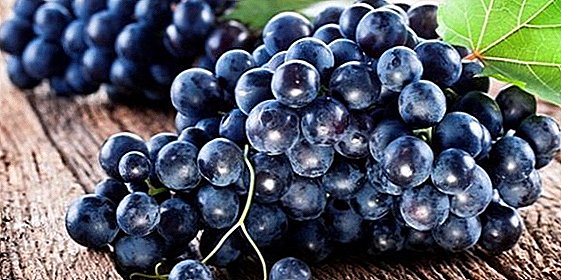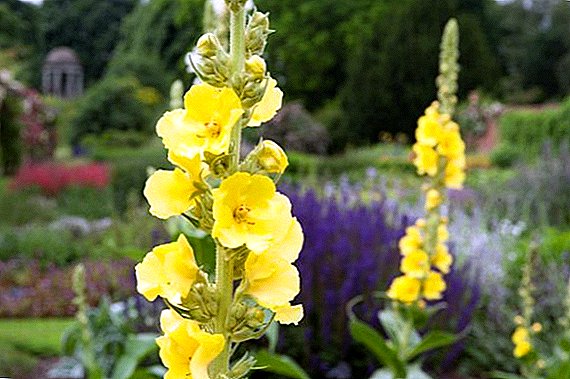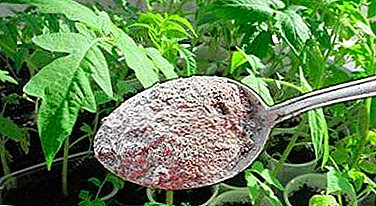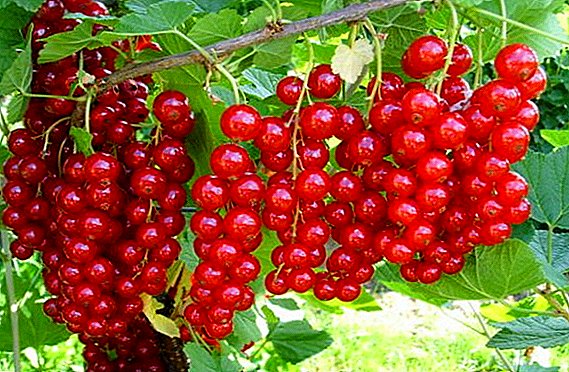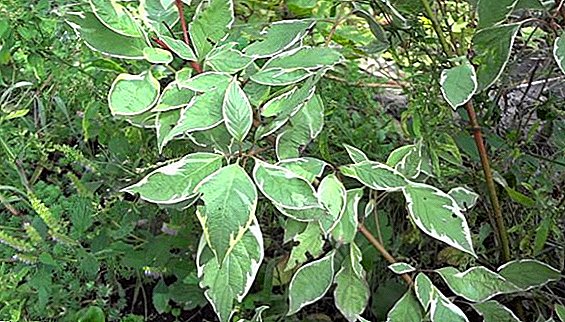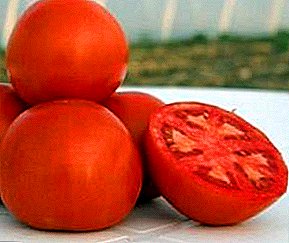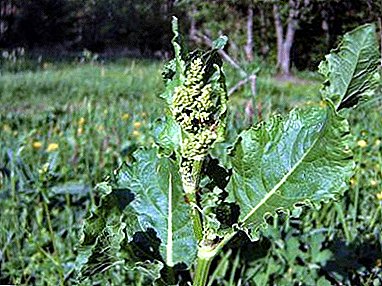
One of the most popular crops for growing is sorrel. There are more than 200 varieties of this plant. Many of the varieties are used in cooking, and very often sorrel is used in agriculture as animal feed.
It is quite unpretentious, contains many beneficial trace elements and has a pleasant sour taste.
However, despite the simplicity of cultivation, there are several problems associated with its cultivation. One such situation is when the sorrel went to the arrow. Why the plant goes to color and what to do in this case, we consider in the article.
Why does the plant shoot?
It is often observed that when sowing from one batch, at the same time and under the same conditions, some plants often go to the arrow, and others much less often. The fact is that sorrel refers to dioecious plants. This means that he has plants for men and women.
They are most susceptible to flowering and often go to the arrow.
 The arrow is the future inflorescence, after flowering seeds form on it. During the flowering and ripening of seeds, sorrel leaves become hard and unsuitable for human consumption. Female plants are recommended to throw away, leaving a couple of bushes to collect seeds. Male plants also go to the arrow, but they do it much less often.
The arrow is the future inflorescence, after flowering seeds form on it. During the flowering and ripening of seeds, sorrel leaves become hard and unsuitable for human consumption. Female plants are recommended to throw away, leaving a couple of bushes to collect seeds. Male plants also go to the arrow, but they do it much less often.
An important factor is also the conditions for growing sorrel. If the plant lacks moisture, sunlight, or the soil is too acidic, the sorrel will often go to the arrow.
It will be difficult for him to please you with juicy and fresh leaves, since in such stressful conditions the goal of the plant will be to bring seeds and continue its kind, rather than grow more fresh green leaves.
When is it blooming and what does blooming culture look like?
The first year for sorrel is fruitful. In the second year, the plant actively begins to go to the arrow; its flowering and seed formation phases begin. This can be prevented by completely cutting off all the leaves and stems under the root. After this, the soil should be poured abundantly with water so that the plant will start to produce a new crop faster. However, this should be done only if you do not plan to ripen and harvest sorrel seeds.
If the arrow is not cut off during its formation, soon it will be possible to observe the flowering of sorrel. Depending on the variety, it can be white, green or very small red inflorescences, elongated upwards.
Are there varieties without bracing?
The process of formation of arrows depends on several factors.. First of all, from a variety of plants.
Many sorrel varieties are bred with stalk resistance and rarely go to the arrow.
These varieties include, for example, emerald snow, Belleville, large leaf and others. Therefore, when choosing a variety, it is important to take this into account and pay attention to the description of the variety, its characteristics.
What happens if nothing is done?
In case you do not remove the resulting arrows, do not get rid of female plants or do not change the conditions, do not expect yields. When sorrel goes to the arrow, the whole plant directs all its forces and resources to the formation of seeds. At the same time the leaves become hard, useful properties disappear, it is saturated with oxalic acid. And it is harmful to the human body. During flowering and ripening, the leaves may turn yellow or abyss at all.
Therefore, if you do not plan to collect seeds from the plant, it is better to prevent flowering as described above. Or simply cut the arrows as they appear. But, in that case, their education will be frequent.
What to do?
 So, what to do if you see that your plant starts to go in the arrow?
So, what to do if you see that your plant starts to go in the arrow?
- First of all, check the conditions: humidity, soil quality, presence of light. If any of the factors is violated, create a more comfortable environment for sorrel. If all is well, then proceed to the following points.
- If the plant is female, then there are many arrows and few leaves, then the plant should be discarded. Leave 1-2 for seed, if necessary.
- If the plant brought a good harvest last year, then it's time to update it. Using a knife, scissors or pruner, completely cut off all leaves, stems and arrows. Well pour the bed with sorrel. In a couple of weeks he will delight you with fresh, juicy leaves.
When do the plant save?
Do not cut off the arrows or destroy the plant in case you want to collect seeds. Or, if your plants are already 3-4 years old and it's time to update them.
In this case You can leave a few arrows to sorrel sown naturally and the next year you had young plants. If you want to collect the seeds of your sorrel and, for example, grow it at home in the winter, you should do the following:
- Do not damage the arrow of the plant.
- Give sorrel to bloom.
- Wait for the seeds to ripen.
- Carefully cut off the arrows with ripe seeds, collect them in a container.
After flowering and ripening, it is necessary to give the plant a rest.. Most likely, this season it will no longer be the formation of the crop. But next you will have a lot of new bushes of fresh sorrel.
Sorrel is a useful culture that has entered our lives and grows in almost every garden. This culture does not need a lot of care and special conditions in order to please you with fresh greens. You just need to follow a few rules of care and your family will enjoy delicious dishes from this beautiful plant from the garden.


